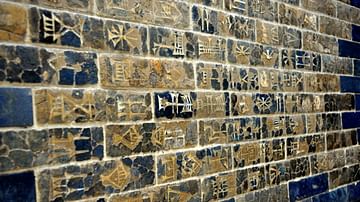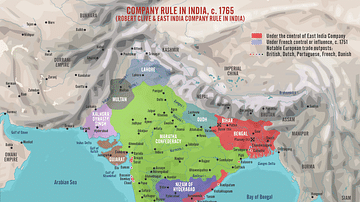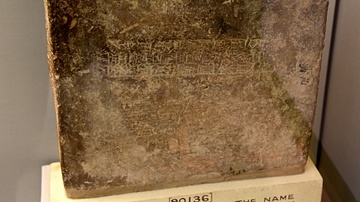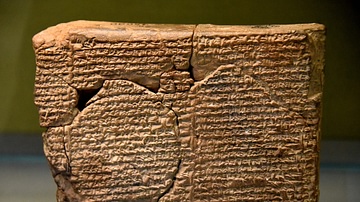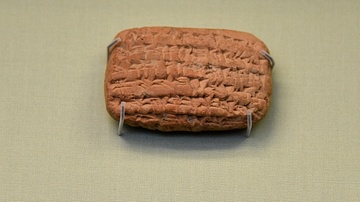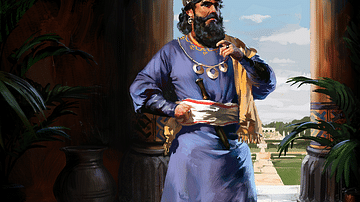Illustration
Building Babylon: this inscribed stone was found at the ruins of Babylon and described the religious devotion and civic achievement of king Nebuchadnezzar II. The long inscription records that as well as building the Processional Way and the Ishtar Gate, the king decorated chapels and restored equipment for the new year celebrations, such as the processional boat for the god Marduk. He also rebuilt temples and improved city walls. It was found before 1803 CE and was given to the Museum of the East India House From Babylon, southern Mesopotamia, Iraq. Neo-Babylonian Period, reign of king Nebuchadnezzar II, 605-552 BCE. (The British Museum, London)
About the Author
Cite This Work
APA Style
Amin, O. S. M. (2016, June 17). The East India House Inscription. World History Encyclopedia. Retrieved from https://www.worldhistory.org/image/5241/the-east-india-house-inscription/
Chicago Style
Amin, Osama Shukir Muhammed. "The East India House Inscription." World History Encyclopedia. Last modified June 17, 2016. https://www.worldhistory.org/image/5241/the-east-india-house-inscription/.
MLA Style
Amin, Osama Shukir Muhammed. "The East India House Inscription." World History Encyclopedia. World History Encyclopedia, 17 Jun 2016. Web. 05 Apr 2025.



